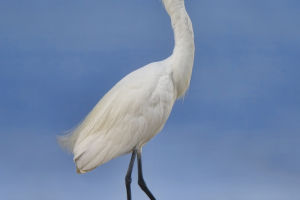Deer Antler Mysteries
Antlers are the gender characteristic of bucks, serving as their capital for courtship display and as weapons for intraspecific competition and interspecies defense. There are approximately 40 species of deer worldwide, most of which are males with antlers.
The regenerative ability of antlers is one of the mysteries of biology.
To unravel this mystery, a research team led by Professor Price at the Royal Veterinary College in the UK investigated the extraordinary regenerative ability of deer antlers, revealing the crucial role played by stem cells in antler regeneration.
In the animal kingdom, a buck's antlers regenerate annually as living tissue, making it the only mammal capable of regenerating complete body parts.
The growth of antlers requires significant amounts of calcium, phosphates, and energy. They grow and shed annually; only bucks in optimal nutritional condition can afford this investment.
Therefore, a female deer regards large antlers as a sign of a buck's superior quality, much like a woman seeing her boyfriend buy a Porsche every year and discard it, believing him to be truly wealthy.
However, antlers carry another significance that a Porsche does not. While a Porsche cannot generate more wealth, massive antlers can help them defeat competitors, ward off predators, and secure the best grazing grounds. Objectively speaking, the vast antlers on a buck's head are a burden, affecting its agility and providing convenient conditions for predators.
But this burden seems to convey to females that despite the heavy burden on their heads, these males can still run like the wind and triumph in battle, enough to demonstrate their inherent strength and courage. If such males are not chosen, then who else?
In the animal kingdom, deer are the only mammals capable of regenerating complete body parts. When antlers reach their maximum size, the bone begins to harden, and the velvety antler begins to shed. Once the velvet is shed, leaving bare bones, it can serve as a formidable weapon in combat. At the end of the mating season, antlers are shed to conserve energy, and by the arrival of spring, a pair of new bony protrusions can grow on the deer's head.
For a long time, the regenerative ability of animals has been a subject of interest. Is it possible to find ways to enhance human regeneration, similar to how deer antlers can self-repair and grow new antlers? Or can similar mechanisms be utilized to manufacture tissues or organs outside the human body, treating them as spare parts to replace damaged parts of the human body?
Stem cells, as crucial cells in the deer's body, play a significant role in antler regeneration.
Research has found that stem cells can develop into many specialized cell types and support the entire process of antler regeneration.
"Stem cells" are cells in an organism that controls cell regeneration. The charm of stem cells lies in their primitiveness: once the body needs them, they can divide and produce differentiated cells along developmental pathways.
Stem cells may be regulated through signaling pathways such as hormones like estrogen or testosterone. The regenerative ability of deer antlers serves as a natural model for understanding the regeneration process. The long-term goal of the Price research group is to better understand the chemical signaling pathways of antler regeneration, aiding in the development of new treatments for stubborn diseases like Parkinson's, ultimately helping to repair damaged human tissues.
Scientists hope to obtain pluripotent stem cells from embryos through cloning and control the differentiation of these stem cells to obtain desired tissues and organs.
This study provides new insights into mammalian regeneration and new research directions for regenerative medicine.


